If you shop the grocery store lately, you are bound to have lots of questions about healthy dairy options. There is a giant wall of choices, and you need to understand the differences between conventional, organic, grass-fed, low-fat, fresh, and raw milk. It’s a hot topic in the nutrition field and I’m going to break it down for you.
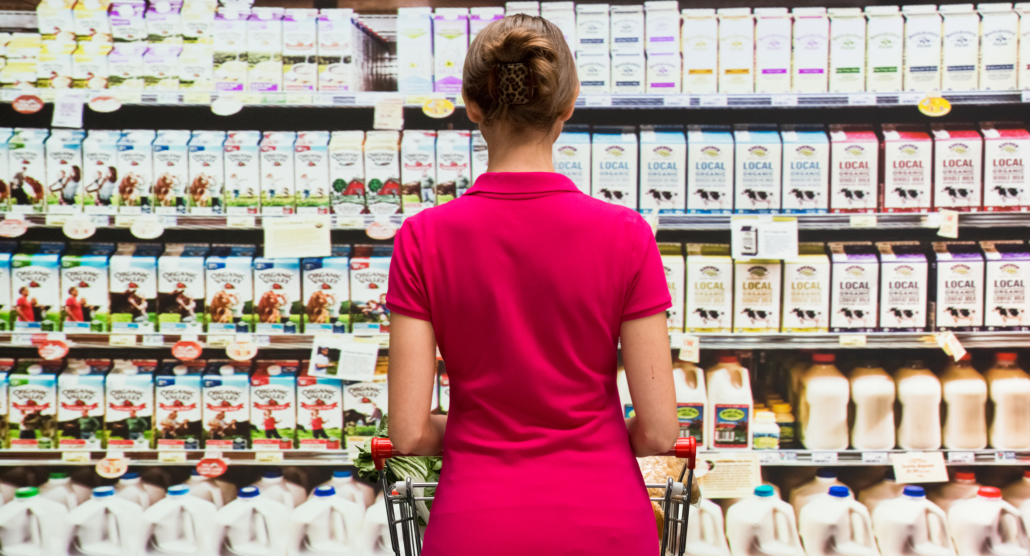
What are the health benefits of dairy?
Milk and dairy products have been around a very long time, at least 10,000 years or more by most accounts. Fresh milk provides the following nutrients when it hasn’t been altered by pasteurization:
- fat-soluble vitamins like calcium and phosphate
- conjugated linoleic acid (an anti-inflammatory and healing fat)
- balanced amounts of essential fatty acids Omega-3 and Omega-6
- probiotics
- complete proteins, including glutathione (another anti-inflammtory)
Feeding our babies breastmilk provides all of the nutrients above, plus natural growth hormones. We are nearly all born with the ability to process lactose, the sugar in milk, but that ability begins to decrease by age 2. About 25% of Caucasians are lactose intolerant, and 97% of Native Americans are lactose-intolerant. (1) Despite our lactose intolerance issues, dairy is still recommended for children and adults.

Do we need milk for calcium?
While calcium is one of the beneficial nutrients from dairy, it’s not as readily available as the dairy businesses would like us to think. Calcium is delivered into your bones when there is a synergistic relationship between it and magnesium, vitamin K2, and vitamin D. The vitamin D added to milk after pasteurization is not well absorbed by our body. What we really want is calcium in a bioavailable form, which is found in dark leafy greens, sesame seeds, dried figs, rhubarb, and bone broth.
The second big issue with the calcium conversation is the low-fat/no-fat nonsense. If your body is in balance with the other micronutrients I mentioned, calcium needs saturated fat to be absorbed. If you eat a 0% fat yogurt, you just got zero of the calcium.
When the beneficial fat is removed from the milk, it’s replaced with carbohydrate-based fillers like cellulose, maltodextrins, gums, starches, fiber, and polydextrose. The other thing added to low-fat products is SUGAR. When you remove the fat, you remove the flavor. Added sugar is a whole other conversation, but worth noting so you skip those fruity, sugary, no-fat choices next time you are in the yogurt aisle.
Also, studies have shown there is no reduced risk for osteoporosis when drinking two or more glasses of milk a day versus two glasses per week. (2) You are better off protecting your bones by eating a plant-rich diet and incorporating movement into your lifestyle.
What’s the downside of dairy?
Conventional dairy products typically cause your body to go into a proinflammatory state. It can cause leaky gut syndrome, insulin resistance, and development of gut dysbiosis. The main goal I have when creating a healing diet is to reduce the overall inflammation levels in your body. In this day and age, our bodies are taxed by environmental toxins all the time. We can’t always control that, but we can control what we choose to eat.
As someone who creates healing diets for clients, often I work with people to eliminate dairy from their diet. Why? Eliminating dairy gives you the opportunity to see if you can reduce issues related to digestion, skin (acne/rosacea/eczema), asthma, candida, joint pain, allergies, and headaches. When you reduce overall gut irritation, you actually make it possible for your body to absorb nutrients better from the other foods you eat.
Organic versus conventional dairy?
Milk quality has improved in recent years as companies realize customers do not want antibiotics in the glass of milk they serve their kids. However, if you do not choose organic milk, you will be exposed to pesticides. They exist in the grains fed to the cows, which then goes right into the milk. The toxins actually bind with the fat in milk and they are not eliminated by pasteurization. Always purchase organic milk to avoid the toxic exposure. Remember, this applies to all your dairy products: ice cream, cream cheese, cheese, sour cream, creamer, and so on. The conventional milk used for these products is pro-inflammatory which is exactly what I teach my clients to avoid.
What happens when milk is pasteurized?
Pasteurization is the process of heating milk to very high temperatures to kill off any bacteria, or microbes, present. It came into practice in the 1800s when we didn’t have the clean facilities to gather milk on a regular basis. The demand was increasing during the time of industrialization and pasteurization allows for milk to be produced cheaply, which is what the big dairy businesses needed. Homogenized milk was the next change, where milk fat is separated so the cream no longer rises to the top. So what does this do to our milk?
Pasteurized milk has no live bacteria, compared to raw milk that may have lactobacilli present. You know, those probiotics you pay for in a bottle used to come from a glass of milk. Heat from pasteurization breaks down the proteins and fat, resulting in health-damaging consequences. The new milk creates a milk-fat soap through saponification. This creates a product that irritates your gut and can cause either diarrhea or constipation. The nutrients we want from milk, like calcium and phosphate, are now much less bioavailable and difficult to absorb. It’s about a 6-fold drop in nutrition when comparing fresh milk to pasteurized milk. (3) The amino acids are damaged with the heat and then turned into pro-inflammatory irritants, or allergens.
Where can I get healthy dairy options?
Yogurt is still the one dairy option I recommend keeping in your diet, if you are able to tolerate it. The good news is that fermentation rejuvenates the damaged proteins and makes the minerals we need more bioavailable. You want to find whole milk, grass-fed, organic yogurt in the plain variety. Skip the flavored options and just add your own raw honey or maple syrup if you need a little sweetness.

Raw milk is becoming more available across the United States, however it is still illegal to sell in Canada. To find raw milk farmers near you, head over to Real Milk to see a state by state guide. This is the place to know your farmer, visit the farm, and talk about the safety of the milk. There was a lot of scare tactics used when pasteurization came into effect at the turn of the century. As we move towards getting more food closer to the source, I hope raw milk will become widely available. What I don’t understand is why we can buy soda and cigarettes that cause obesity and cancer, but not raw milk. As a healthy dairy option, the amount of regulation against raw milk surprises me.
[clickToTweet tweet=”Dairy decisions: Why can we buy soda & cigarettes that cause obesity & cancer, but not raw milk? ” quote=”What I don’t understand is why we can buy soda and cigarettes that cause obesity and cancer, but not raw milk. “]
Spring is actually the best time to introduce yourself to raw milk as the animals will be eating fresh, growing grass. I can’t get raw milk here in Canada, but I’ve already talked to the owners of a raw milk dairy back home during my time working on a farmer’s market. They were allowed to sell raw milk cheese at the market and it was amazing!
Here’s my recommendation for healthy dairy options in order of preference:
- Eliminate dairy for two weeks to see how your health may improve. Add back in and notice if you see any changes.
- Raw milk if you can find a quality source.
- Yogurt made with Organic, grass-fed milk. Plain flavor.
- Organic grass-fed milk (cow/sheep/goat) whole milk.
- Organic milk, whole milk.
If you wish to continue on the non-dairy train, you can read my tutorial here on how to make your own almond milk. Coconut milk, cashew milk, hemp seed milk and rice milk are all available at many stores. I don’t recommend soy milk as it will be a GMO product unless it’s listed as organic. You can find lots of recipes in my meal plan section that includes primarily dairy-free options.
Is it easy to go dairy free? Yes and no. I no longer drink milk but find I can tolerate a quality yogurt or cheese here or there. More often I’m going to make a homemade coconut milk yogurt instead. My kids however LOVE their cold cereal and milk in the morning. It’s a treat they get occasionally so I invest in the best milk and organic cereal I can find. It’s not a perfect solution, but it’s working for us right now. Progress, not perfection.
Will I let them try raw milk down the road? Yes, once I get to know the farming practices in detail and can trust the safety of the milk. I would rather they get the full benefit of the vitamins and minerals in milk instead of a watered down version.
Leave a note in the comments if you have questions. Thanks for taking the time to empower yourself with information about choosing healthy dairy options.
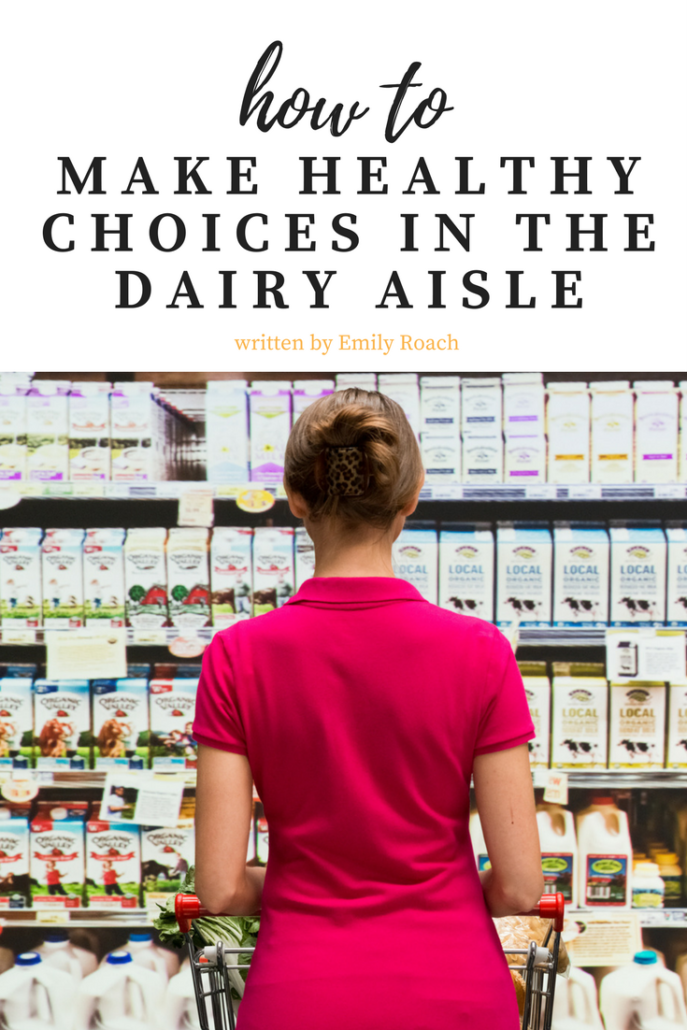
Healthy Dairy Options Additional resources
The Big Fat Surprise: discusses the need for fat in our diet.
Devil in the Milk: Illness, Health and Politics of A1 and A2 milk. : further reading to learn about the various qualities of milk
The Paleo Approach: in depth look at why eliminating dairy can lead to optimal health, especially for women with autoimmune conditions.
Click here for a report card on your favorite organic milks to see how they stack up to the competition. There is also a yogurt one on this site too. I learned that Organic Valley is a better option than Horizon. Horizon is organic, but it’s mass produced and the nutrient quality is not the same as using milk from grass-fed animals. Their cows may be getting organic grain feed, which isn’t going to produce a premium product.
Sources
- The Paleo Approach, pg 106
- Feskanich, D., W. C. Willett, M. J. Stampfer, and G. A. Colditz. “Milk, Dietary Calcium, and Bone Fractures in Women: A 12-year Prospective Study.” American Journal of Public Health. U.S. National Library of Medicine, June 1997. Web. 06 Apr. 2017.
- Roig, M.j., A. AlegrıÌa, R. Barberá, R. Farré, and M.j. Lagarda. “Calcium Dialysability as an Estimation of Bioavailability in Human Milk, Cow Milk and Infant Formulas.” Food Chemistry 64.3 (1999): 403-09. Web.
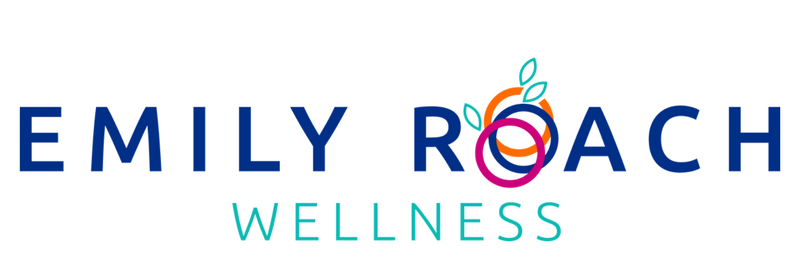
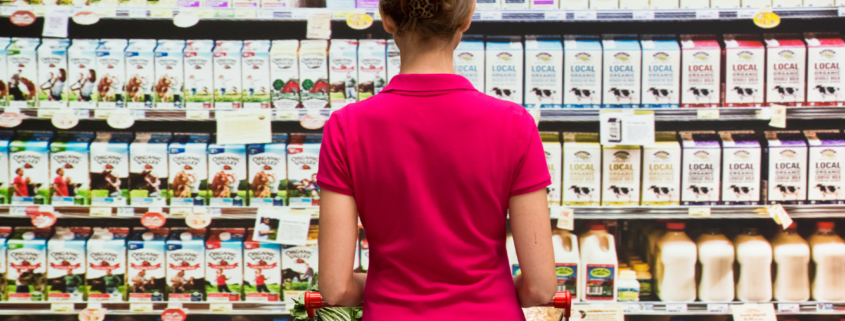
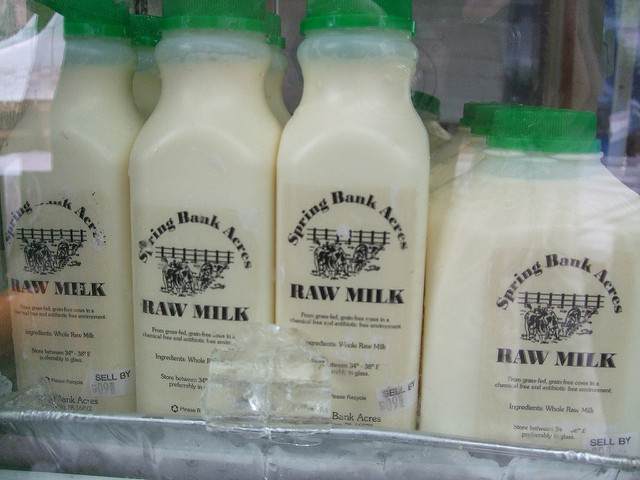

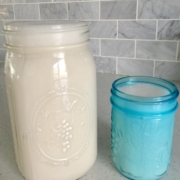
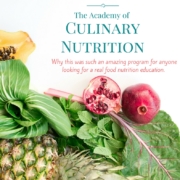

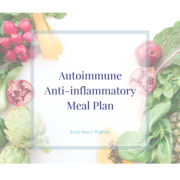

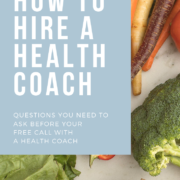




Super helpful, Em! Thanks for taking the time to do the research.
Thanks for reading all about how to make inform decisions while standing in front of a wall of yogurt at the store.
I’m very interested in your research on milk products. I’m going to try some organic milk you suggested. I only drink milk 1-2 times a day in my coffee but I use 1/2 milk 1/2 coffee and once in a while in cereal.